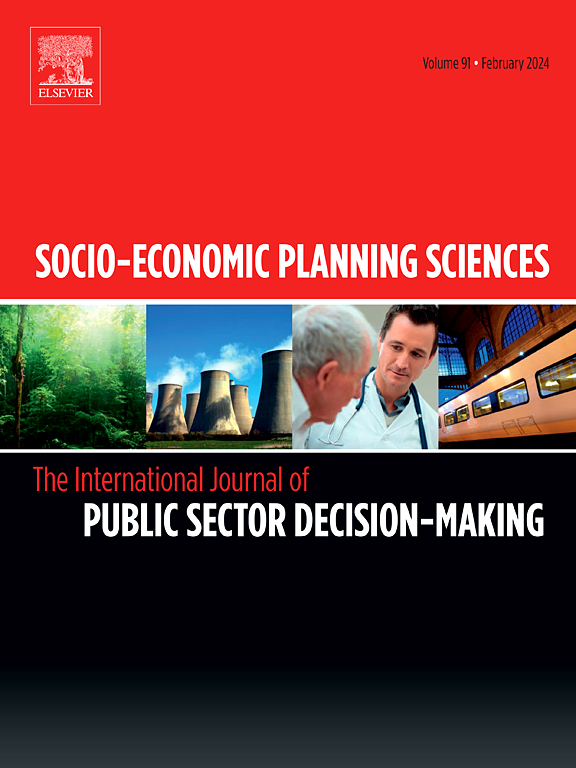Balancing fairness and efficiency in policing: A mean-variance utility and data envelopment analysis approach to arrest practices in U.S. cities
IF 5.4
2区 经济学
Q1 ECONOMICS
引用次数: 0
Abstract
This research pioneers a novel integration of the mean-variance utility model with a two-stage Data Envelopment Analysis (DEA) framework to unravel the intricate fairness-efficiency trade-offs in law enforcement arrests. Leveraging data from 157 U S. cities, it explores how police departments navigate the dual imperatives of equity and operational efficiency amidst contextual risks such as crime rates, socioeconomic disparities, and diversity dynamics. The mean-variance utility model provides a rigorous theoretical lens to decode these complexities, while DEA quantifies the relative efficiency of departments in achieving equitable outcomes with constrained resources. The findings reveal an inverted U-shaped relationship between police department diversity and fairness-efficiency, suggesting that diversity enhances outcomes up to an optimal point, beyond which operational challenges begin to erode its benefits. Community diversity positively influences fairness-efficiency, highlighting the critical need for culturally attuned policing strategies. By bridging robust theoretical models with empirical insights, this study offers actionable strategies to optimize diversity, resource allocation, and operational frameworks for equitable policing. Groundbreaking in its approach, this research delivers practical implications for policymakers and law enforcement leaders while advancing the discourse on fairness and efficiency in public sector decision-making.
警务公平与效率的平衡:美国城市逮捕实践的均值方差效用和数据包络分析方法
本研究开创了均值-方差实用新型与两阶段数据包络分析(DEA)框架的新颖整合,以揭示执法逮捕中复杂的公平-效率权衡。利用来自美国157个城市的数据,它探讨了警察部门如何在犯罪率、社会经济差异和多样性动态等背景风险中应对公平和运营效率的双重要求。均值方差实用新型提供了一个严谨的理论视角来解读这些复杂性,而DEA量化了部门在有限资源下实现公平结果的相对效率。研究结果揭示了警察部门多样性与公平效率之间的倒u型关系,表明多样性将结果提高到最佳程度,超过最佳程度,运营挑战就会开始侵蚀其收益。社区多样性对公平效率有积极影响,突出了对文化协调的警务战略的迫切需要。通过将强大的理论模型与实证见解相结合,本研究提供了可操作的策略,以优化多样性、资源分配和公平警务的操作框架。该研究方法具有开创性,为政策制定者和执法领导人提供了实际意义,同时推进了关于公共部门决策公平和效率的论述。
本文章由计算机程序翻译,如有差异,请以英文原文为准。
求助全文
约1分钟内获得全文
求助全文
来源期刊

Socio-economic Planning Sciences
OPERATIONS RESEARCH & MANAGEMENT SCIENCE-
CiteScore
9.40
自引率
13.10%
发文量
294
审稿时长
58 days
期刊介绍:
Studies directed toward the more effective utilization of existing resources, e.g. mathematical programming models of health care delivery systems with relevance to more effective program design; systems analysis of fire outbreaks and its relevance to the location of fire stations; statistical analysis of the efficiency of a developing country economy or industry.
Studies relating to the interaction of various segments of society and technology, e.g. the effects of government health policies on the utilization and design of hospital facilities; the relationship between housing density and the demands on public transportation or other service facilities: patterns and implications of urban development and air or water pollution.
Studies devoted to the anticipations of and response to future needs for social, health and other human services, e.g. the relationship between industrial growth and the development of educational resources in affected areas; investigation of future demands for material and child health resources in a developing country; design of effective recycling in an urban setting.
 求助内容:
求助内容: 应助结果提醒方式:
应助结果提醒方式:


